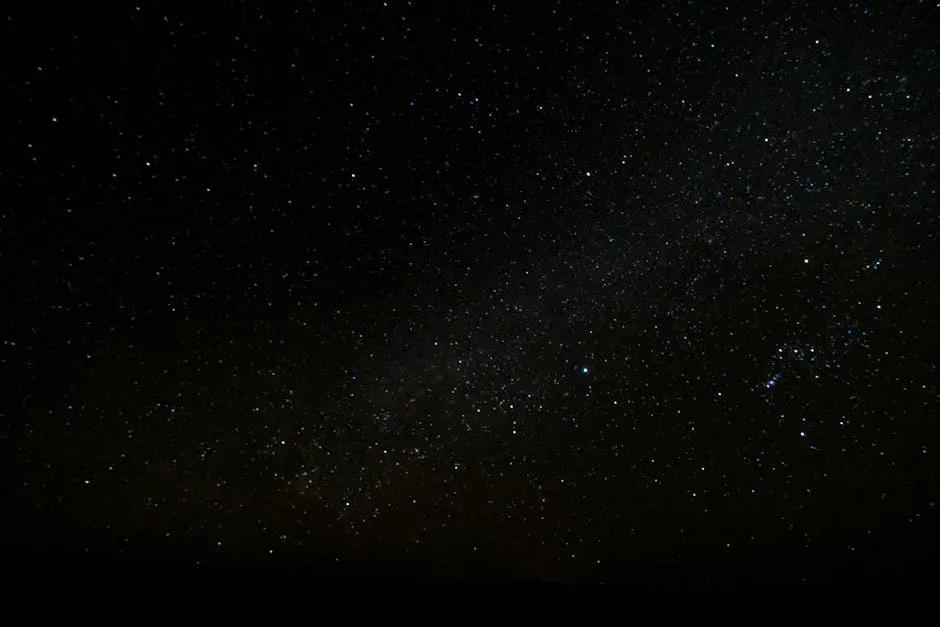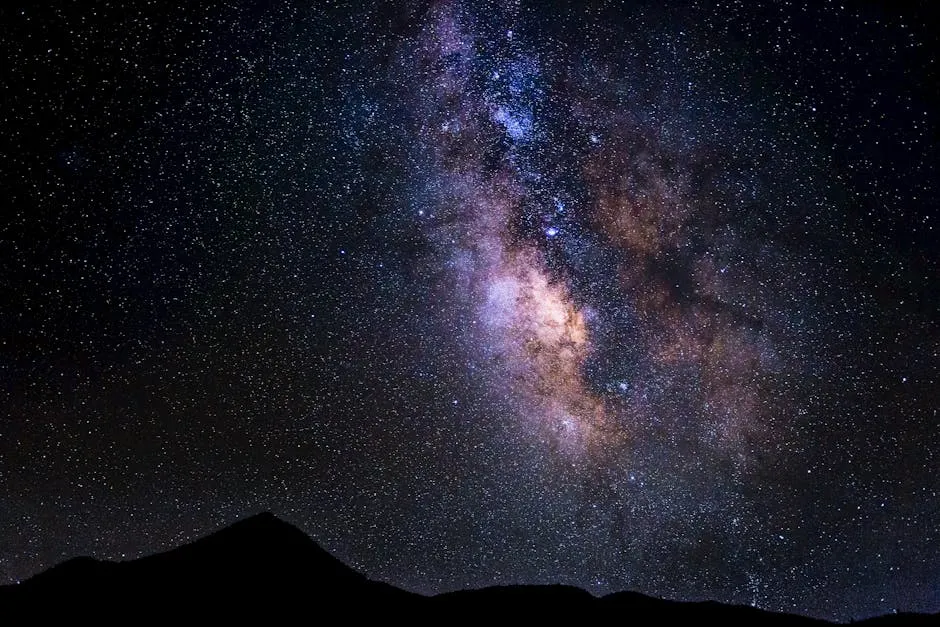
Why Do Different Regions Experience Varying Star Twinkle Patterns?
Introduction
In the vast cosmic tapestry, twinkling stars serve as nature’s dazzling light show, captivating stargazers across the globe. But have you ever pondered why not all stars twinkle uniformly? This enchanting phenomenon, known as stellar scintillation, isn’t just a whimsical trick of the eye; it’s a complex interplay between the cosmos and our atmosphere. Factors such as atmospheric conditions, altitude, and even geographical location play pivotal roles in how we perceive the flickering lights above.
When starlight passes through our atmosphere, it encounters layers of air with varying temperatures and densities. This causes the light to bend, or refract, creating the twinkling effect. Think of it like a game of cosmic hide-and-seek, where the stars sometimes play coy beneath the shifting air. Interestingly, stars near the horizon twinkle more than those overhead, thanks to the greater thickness of atmosphere their light must traverse.
Moreover, the effect of atmospheric turbulence cannot be ignored. Different regions experience varying degrees of turbulence, which further contributes to the unique twinkle patterns we observe. Some areas, like high-altitude mountains, have clearer skies that allow for a steadier view of stars. Others, such as urban areas plagued by light pollution, struggle to see the stars at all.

As we embark on this astral journey, we’ll uncover the science behind varying twinkle patterns and why some stars seem to dance while others remain steadfast. So grab your telescope (or just your imagination) as we explore the delightful mysteries of the night sky! And if you need a great telescope to dive into this cosmic adventure, check out the Celestron AstroMaster 70AZ Telescope. It’s perfect for beginners and will help you discover the wonders of the universe!
Understanding why stars twinkle can enhance your stargazing experience. Why do stars twinkle in the night sky
Summary
The twinkling of stars, or stellar scintillation, is a captivating phenomenon influenced by several factors. As starlight passes through the Earth’s atmosphere, it encounters layers of varying temperature and density, causing the light to bend and refract. This effect is heightened for stars near the horizon due to the greater thickness of atmosphere their light must traverse. Additionally, different regions of the world experience variations in atmospheric turbulence, light pollution, and altitude, all contributing to the unique twinkling patterns observed in different locations.
Furthermore, the intrinsic characteristics of the stars themselves, their distance, and brightness can impact their apparent twinkle. This article will explore the intricate relationship between atmospheric conditions and starlight, clarify how geographical factors affect star visibility, and explain why some regions witness more pronounced twinkling than others. By the end, readers will not only appreciate the beauty of the night sky but understand the underlying principles that govern its captivating dance.
So, the next time you gaze up at the twinkling stars, remember that each flicker tells a story of light navigating through layers of our atmosphere, revealing the intricate connection between the cosmos and our planet. Whether you’re in a bustling city or a serene countryside, the stars above offer a delightful spectacle—one that varies based on where you are and the atmospheric conditions at play. And if you’re looking for a guide to help you navigate the night sky, consider the Star Chart: A Visual Guide to the Night Sky. It’s a fantastic companion for any stargazer!
Understanding Stellar Scintillation
What is Stellar Scintillation?
Stellar scintillation refers to the twinkling effect of stars as seen from Earth. This fascinating phenomenon occurs when starlight passes through various layers of the Earth’s atmosphere. Each layer has different temperatures and densities, causing the light to bend, or refract. Imagine trying to look at a candle through a glass of water; the light shifts and dances. That’s what happens with stars, but on a grander scale!
As light travels from a star to your eyes, it encounters turbulent air pockets. These pockets distort the light, creating slight variations in intensity and even color. This distortion is why some stars appear to flicker more than others. For instance, stars low on the horizon twinkle more than those overhead, as their light has to journey through a thicker slice of atmosphere.

The Role of the Atmosphere
The Earth’s atmosphere consists of several layers: the troposphere, stratosphere, mesosphere, and thermosphere. Each layer plays a role in how starlight behaves as it travels downward. The troposphere, where most weather occurs, is particularly turbulent. Warm and cold air mix, creating swirling currents that affect light’s path.
Temperature and pressure variations are crucial here. When the temperature shifts, so does the density of the air. Light travels slower through denser air, bending it more than through thinner air. This bending is like a roller coaster ride, where the light takes unexpected turns before reaching your eye. Higher pressure can lead to clearer skies, while lower pressure often brings turbulence, making stars appear more restless.
Atmospheric Turbulence and Its Effects
Atmospheric turbulence is the wild card in the star-twinkling game. As air flows chaotically, light rays encounter different densities and temperatures. Think of it as a bumpy ride through a cosmic traffic jam. The light is continuously refracted, leading to the shimmering effect we see.
To illustrate, picture a calm lake. When the surface is still, reflections are clear and stable. But toss a pebble into the water, and ripples distort that reflection. The same concept applies to starlight in our atmosphere. Those ripples, caused by turbulence, create the twinkling effect. In essence, stars are like distant candles flickering in a breeze, visible from our vantage point on Earth.
Understanding how these elements interact helps demystify the mesmerizing twinkle of stars. The next time you gaze up at a starry sky, remember that each flicker is a dance of light, shaped by the atmosphere surrounding our planet. And if you’re keen on getting a closer look at those stars, consider the Orion 10015 StarBlast 4.5 Astro Reflector Telescope. It’s compact and perfect for those who want to explore the night sky!
Factors Influencing Star Twinkle Patterns
Geographic Location
Different regions on Earth experience varying star twinkle patterns due to several factors. These include atmospheric conditions, altitude, and geographic features. For example, stargazing from a mountainous area often provides a clearer view than from a bustling city. Higher altitudes mean thinner atmosphere, which reduces the amount of turbulence that starlight encounters.
In contrast, flat regions may have more stable atmospheric conditions but can also be subject to pollution and humidity. Urban areas, with their bright lights and air pollution, can wash out the twinkling effect entirely. For instance, in a city like Los Angeles, stargazers might struggle to see the twinkling stars due to light interference.
On the other hand, rural locations, away from artificial lights, offer a stunning view of the night sky. Observers in places like the Atacama Desert in Chile or Mauna Kea in Hawaii often witness stars that seem to shimmer with greater intensity. Here, the combination of altitude and clear skies creates optimal conditions for star-gazing. To make the most of your stargazing experience, remember to bring along a reliable National Geographic 70mm Telescope. It’s compact and great for family adventures under the stars!
By understanding how geographic location affects star visibility, you can choose the best spots for your next stargazing adventure. The twinkle of stars is not just a visual delight, but also a reflection of the unique atmospheric conditions found in different parts of our world.

Altitude and Atmospheric Thickness
Higher altitudes provide a front-row seat to the universe. At these lofty heights, the atmosphere thins out, which means less air to distort starlight. Ever looked up from a mountain? The stars seem clearer and steadier, twinkling less than those seen from sea level.
Research shows that atmospheric thickness significantly impacts the twinkling effect. A study found that stargazers at elevations above 2,500 meters experience a substantial reduction in twinkling. The thinner air results in fewer temperature variations, leading to a more stable view of the night sky. In contrast, lowland areas are often shrouded in humidity and air pollution, which exacerbate twinkling. So, if you want to enjoy a celestial light show without the flickering drama, head for the hills! And don’t forget a comfy Portable Camping Chair for Stargazing to sit back and enjoy the view!
Light Pollution
Ah, the bright lights of urban living! While they may illuminate our streets, they also wash out the night sky. Light pollution is a major culprit in obscuring star visibility. In bustling cities, artificial lights scatter and interfere with our view of the stars, making them appear pale and timid.
The difference is striking between urban and rural areas. For optimal stargazing, dark-sky locations are a must. Parks and remote areas with minimal light pollution offer a dazzling view of twinkling stars. For example, places like the Atacama Desert in Chile are famed for their clear skies and lack of light interference. If you plan on heading to such locations, consider bringing along a LED Flashlight for Stargazing to help you navigate in the dark without ruining your night vision!
Choosing a spot far from city lights can transform your star-gazing experience into a magical evening where twinkling stars reign supreme.

Star Characteristics
Stars are not all created equal! Their intrinsic properties play a significant role in how they twinkle. Factors like brightness, distance, and temperature contribute to the twinkling effect. For instance, brighter stars, like Sirius, tend to twinkle more vividly. This is because their intense light encounters atmospheric variations more dramatically than dimmer stars.
Temperature also matters! Hotter stars, like blue or white supergiants, may flicker with color changes due to their higher surface temperatures. This adds a delightful twist to their twinkling, making them appear to dance in the night sky.
In contrast, cooler stars, like red dwarfs, have less pronounced twinkling effects. So next time you gaze at a starry night, consider the fascinating characteristics of those distant lights, each twinkling uniquely based on its nature and our atmospheric conditions. And if you want to learn more about the universe, check out The Universe in a Nutshell by Stephen Hawking. It’s a mind-bending read!
Observational Techniques
Tools for Star Gazing
For the aspiring astronomer, having the right tools can elevate your stargazing game. Telescopes are the star-gazers’ best friends. They allow you to magnify distant celestial bodies, revealing stunning details. Whether you opt for a simple refractor or a more advanced reflector telescope, both can enhance your view of twinkling stars. For a great option, try the SkyWatcher 4″ Refractor Telescope. It’s perfect for detailed observations!
Smartphone apps also play a crucial role in modern stargazing. Apps like SkySafari and Star Walk let you identify stars and constellations in real-time. Simply point your device at the sky, and voilà! You’ll see the names of twinkling stars pop up like magic. If you’re looking for a great app to guide you, consider Star Walk 2 – Night Sky Guide (Smartphone App). It’s user-friendly and packed with information!
When it comes to the best environments for stargazing, consider the following tips:
- Choose a Dark Location: Find areas away from city lights. Parks or countryside spots work wonders.
- Check the Weather: Clear skies are essential. Avoid nights with high humidity or cloud cover.
- Get Comfortable: Bring a blanket or reclining chair. Stargazing should be a cozy experience.
- Patience is Key: Allow your eyes to adjust to the darkness. It can take up to 30 minutes for your vision to adapt fully.
- Share the Experience: Stargazing is more fun with friends or family. Share your findings and enjoy the beauty together.

By using the right tools and tips, your stargazing experiences can transform into unforgettable journeys through the cosmos, where twinkling stars tell their stories. And for those chilly nights under the stars, don’t forget to pack a Camping Blanket for Stargazing to keep warm while you marvel at the night sky!
Citizen Science and Community Observations
Stargazing isn’t just for astronomers; it’s for everyone! Engaging with local astronomy clubs or attending star-gazing events can be a fantastic way to connect with fellow sky-watchers. Imagine standing under a vast canvas of twinkling stars, discussing the mysteries of the universe with enthusiasts who share your passion.
Citizen scientists play a crucial role in expanding our understanding of the cosmos. They collect valuable data, report sightings, and even help track celestial events. For instance, during meteor showers, local clubs often organize public viewings. It’s a wonderful opportunity to learn how to identify different constellations and share experiences with others. And if you want to document your observations, consider using a Stargazing Journal to record your celestial adventures!
One remarkable story comes from a community star party in a small town. Participants set up their telescopes, eager to observe the celestial wonders. A young girl pointed out a particularly bright star that caught her attention. A nearby astronomer identified it as Sirius, the brightest star in our night sky. The joy and excitement on her face were priceless! This kind of interaction fuels curiosity and inspires future generations of astronomers.
Joining these community gatherings not only enhances your knowledge but also fosters camaraderie. You might even make lifelong friends who share your love for the stars. So, don’t hesitate! Grab your binoculars or telescope, head out to your local astronomy club, and immerse yourself in the wonders of the night sky. And if you’re looking for a comfortable way to enjoy the view, consider a Camping Hammock for Relaxing Under the Stars!
Conclusion
In conclusion, the twinkling of stars is a mesmerizing phenomenon rooted in the complex interactions between starlight and our atmospheric conditions. Understanding the factors that influence these variations enriches our appreciation for the night sky. From atmospheric turbulence to geographical location, every element plays its part in crafting the celestial display we behold.
So, the next time you gaze up at the twinkling stars, remember that each flicker tells a story of light navigating through layers of our atmosphere, revealing the intricate connection between the cosmos and our planet. Our atmosphere is like a cosmic kaleidoscope, constantly reshaping how we perceive starlight. The twinkle we see is a dance of light, influenced by the air we breathe.
Moreover, the differences in twinkling patterns across regions highlight the unique characteristics of our planet. Whether you find yourself in a bustling city or a tranquil countryside, the stars above offer a delightful spectacle that varies with each location. And if you want to enjoy the beauty of the stars indoors, consider picking up a Galaxy Projector Night Light for a starry ambiance in your home.
Participating in star-gazing events or joining astronomy clubs can further enhance your understanding of these celestial wonders. Engaging with fellow enthusiasts can spark fascinating discussions and provide insights into the universe.
Ultimately, the study of stellar scintillation is a reminder of the beauty and complexity of our universe. Each star has its own story, waiting to be uncovered by curious minds. So, keep looking up, and let the twinkling stars inspire you! And for a fun twist on stargazing, why not try the Starry Night Board Game? It’s a great way to bring the night sky into your living room!
FAQs
Why do some stars twinkle more than others?
Not all stars twinkle equally, and several factors influence this. The primary reason involves atmospheric turbulence. Stars that are low on the horizon appear to twinkle more. This is because their light travels through a thicker layer of atmosphere compared to stars overhead. As light moves through varying temperatures and densities, it gets bent, creating the twinkling effect. Moreover, the intrinsic properties of stars also play a role. Brighter stars like Sirius tend to twinkle more than dimmer ones. Their intense light feels the effects of atmospheric variations more dramatically. Additionally, stars with high surface temperatures can show noticeable color changes as they flicker. Hence, the combination of distance, brightness, and atmospheric conditions leads to different twinkling intensities.
Can stars twinkle in space?
No, stars do not twinkle in space. When viewed from space, stars shine steadily. The twinkling effect is exclusive to our atmosphere. In space, there’s no turbulent air to disturb starlight. Astronauts aboard the International Space Station, for instance, see stars as constant points of light. The atmospheric layers on Earth are what create the illusion of flickering. So, if you’re hoping to find a twinkling star while floating in zero gravity, you’ll be disappointed!
What is the best way to observe twinkling stars?
To enhance your star-gazing experience, follow these practical tips. First, seek out a dark location away from city lights. Light pollution can wash out the twinkling effect. Next, choose a clear night; clouds and humidity can obscure your view. Allow your eyes to adjust to the darkness for about 30 minutes. This adjustment enhances your ability to see faint stars. Using binoculars or a telescope can also amplify your experience. Lastly, take a blanket and relax while you marvel at the celestial dance happening above. Sharing this experience with friends or family can make it even more enjoyable, so gather your loved ones and appreciate the wonders of the night sky together!
Please let us know what you think about our content by leaving a comment down below!
Thank you for reading till here 🙂
All images from Pexels




